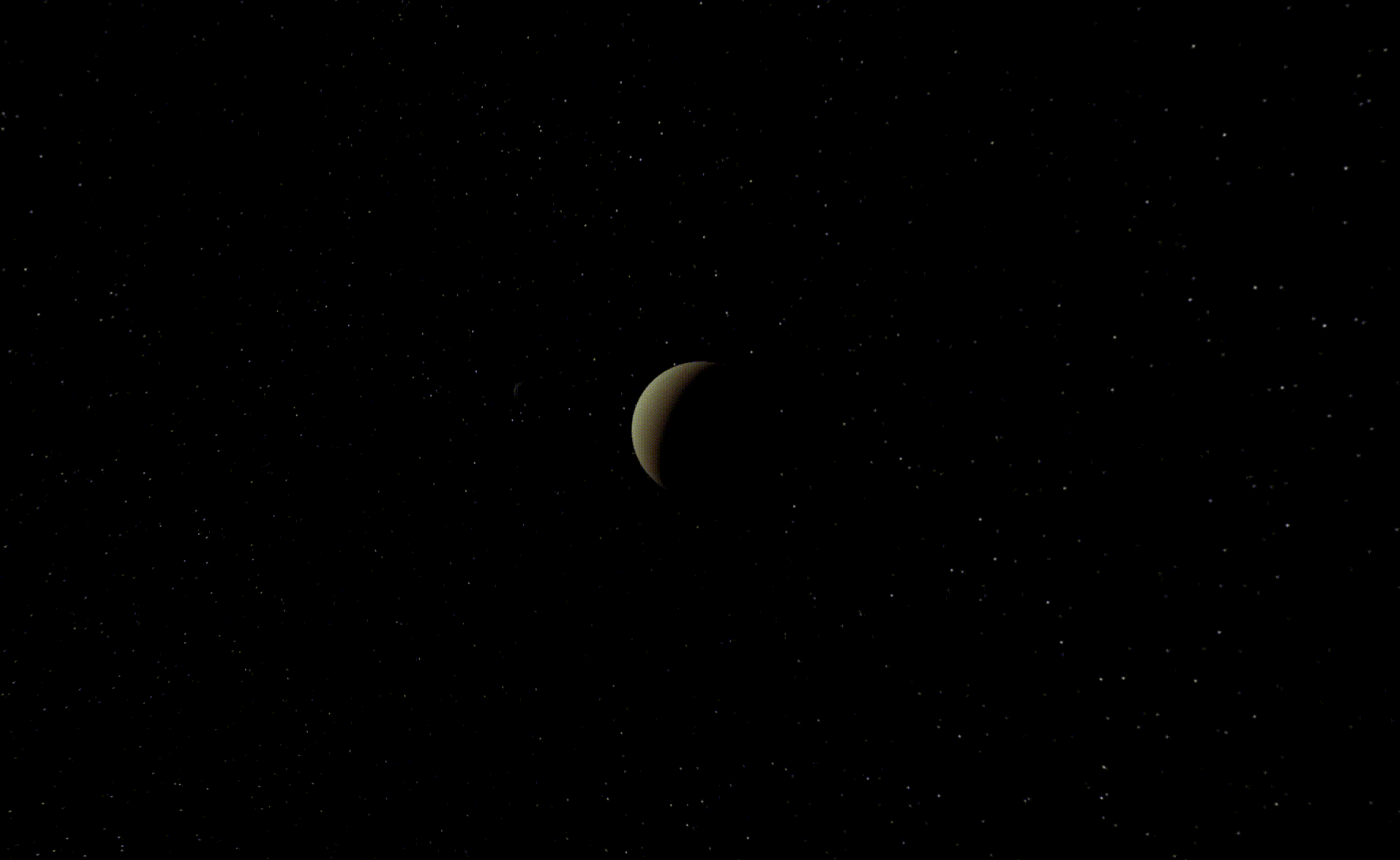New modeling suggests fast collisions could explain why Earth is habitable while Venus is not
15 December 2021

An artistic rendering of an early, large collision on Venus. New modeling results suggest that high-speed impacts such as this could have remelted Venus’ mantle, altering its planetary evolution. Credit: Southwest Research Institute/Simone Marchi.
AGU press contact:
Rebecca Dzombak, +1 (202) 777-7492, [email protected] (UTC-4 hours)
Contact information for the researchers:
Simone Marchi, Southwest Research Institute, [email protected]
NEW ORLEANS—New modeling suggests large, high-speed impacts during Venus’ early history could reconcile the differences between Venus and its rocky sister planet, Earth.
The two planets are alike in many ways. They have similar sizes, masses and densities, and they are relatively similar distances from the Sun. Yet some key differences — such as habitability, atmospheric composition and plate tectonics — have remain unexplained.
High-speed impacts could help explain why Earth is habitable while Venus is not, according to new research being presented at the AGU Fall Meeting 2021.
“Early on, in the beginning of the Solar System, the impactors would have been immense,” said Simone Marchi, a planetary scientist at Southwest Research Institute, who will be presenting the study on Thursday, 16 December at 9:10 a.m. CST. “If an early impactor was larger than, say, a few hundred kilometers in diameter, it could have affected the deep interior of a planet, along with its surface and atmosphere. These colossal collisions would basically affect everything about a planet.”

An example of a smoothed particle hydrodynamics impact simulation of a large planetesimal striking a Venus-like planet. The middle and right panels show Venus 1 hour and 11 hours after impact. Colors indicate temperature. Credit: Southwest Research Institute/Simone Marchi & Raluca Rufu.
Recent work from a different research group showed impactors during Venus’ late accretionary phase, around 4.5 to 4.0 billion years ago, could have hit the planet at much higher speeds, on average, than those colliding with Earth. More than one-quarter of collisions with Venus would have occurred at velocities of at least 30 kilometers per second (about 67,100 miles per hour).
The new research demonstrates the large, high-speed impacts on Venus lead to twice as much mantle melting than impact-induced melting on Earth. High-speed impactors hitting Venus at a shallow angle would have resulted in complete melting of the mantle, according to the new research.
When even just one of these massive, high-velocity impactors hit Venus, it would have interrupted and essentially reset the planet’s evolution, according to Marchi. Venus could have gone from a solid rocky body to a molten mess in moments, altering the mineralogy and physical structure of the planet’s interior and surface. Any pre-existing atmosphere would have been largely blasted away and replaced by volatile gases emerging from the melt. A single high-speed impact could have ultimately determined whether or not tectonic plates formed, which is an important aspect of habitability.
While large impacts likely pummeled both Earth and Venus, the latter could have undergone substantial more melting and disruption due to the high speed of its impacts, setting the planets on divergent evolutionary pathways. For both planets, and the Solar System as a whole, these early collisions had big consequences on their habitability — or lack thereof — today.
“These collisions were responsible for shaping the Solar System. It’s not a stretch of the imagination to say that lacking these processes, we would live in a completely different environment, and perhaps we wouldn’t be here,” Marchi said. “We need to ask how much of the planet we live on today was shaped by these early, violent events.”
###
AGU (www.agu.org) supports 130,000 enthusiasts to experts worldwide in Earth and space sciences. Through broad and inclusive partnerships, we advance discovery and solution science that accelerate knowledge and create solutions that are ethical, unbiased and respectful of communities and their values. Our programs include serving as a scholarly publisher, convening virtual and in-person events and providing career support. We live our values in everything we do, such as our net zero energy renovated building in Washington, D.C. and our Ethics and Equity Center, which fosters a diverse and inclusive geoscience community to ensure responsible conduct.
Notes for Journalists
Simone Marchi will present the results of this work at AGU Fall Meeting 2021. For information about Fall Meeting 2021, including the schedule of press events, visit the online Media Center. Neither the presentation nor this press release is under embargo.
Presentation abstract:
P41B-03 – The role of early energetic collisions in shaping Venus’ evolution
Thursday, 16 December 2021, 08:10 – 08:15 CST
Session information:
P41B – Paving the way to the decade of Venus I Oral